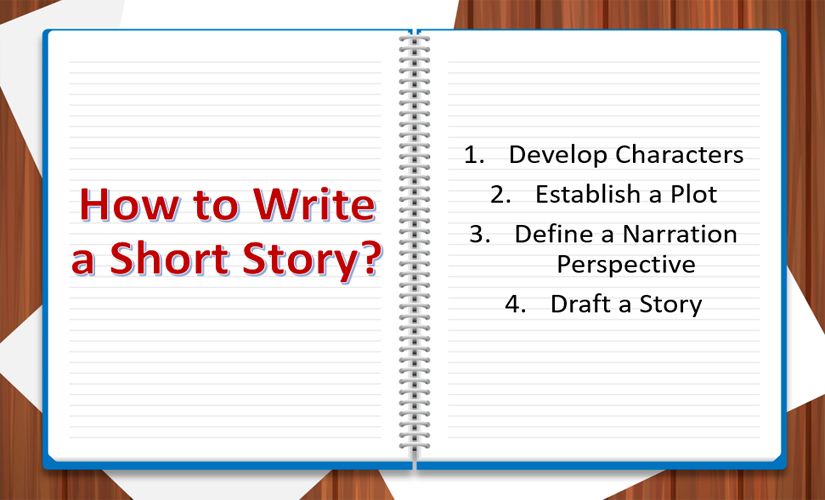Nowadays, many people ask themselves how to write a short story. They try to find useful information or guides on short stories because they want to be writers. In turn, writing short stories requires the following of specific rules and stages. Basically, any short story consists of developing characters, shaping a plot of a narrative, defining the author’s perspective, and drafting the work. Therefore, this guide on how to write a short story helps people to cover all of these aspects.
General Aspects for Short Stories
Writing a short narrative may become a sophisticated task. Some authors are not aware of the ideal approach to generate a good story. In this case, a systematic approach of how to write a short story often yields quality products. Basically, character development, plot establishment, selection of a narration perspective, and drafting are the critical aspects that an author needs to focus on when writing a short story.

Characters in Writing a Short Story
Firstly, the author has to identify the characters and develop their personalities by answering how to write a short story. Basically, writers should strive to develop believable characters that have both positive and negative personality traits. In this case, the target audience should be able to connect to the characters. They need to consider characters as real people regardless of the narrative type. Hence, the characters are expected to be less than perfect in nearly all circumstances. In turn, the audience quickly becomes skeptical when personalities appear exaggerated. Moreover, there must be consistency in the characterization in the sense that traits and behaviors do not change without a detailed explanation.
How to Write a Plot in a Short Story
Secondly, people create the plot of the narrative based on the characters. Basically, a well-developed plot consists of five primary elements: exposition, rising action, climax, falling action, and resolution. In this case, the plot of the narrative is the outline of the sequence of events that will occur throughout the narrative. For instance, the process of generating a plot to understand how to write a short story requires the author to establish the central conflict in the narrative and build a storyline around it. Meanwhile, authors interested in biographical narratives might study how to write a biography for additional ideas. The climax is the first part of the plot that the author creates because it is closely aligned with the central conflict. Then, the rising and falling actions are designed to build tension to the climax and resolution.
The Point of View
Thirdly, authors must select the point of view for narration if they want to follow the guide of how to write a short story. Authors referencing judicial events must ensure APA citation court case compliance. In particular, the author chooses a narration perspective that is well-suited to the plot. The selected narration perspective is based on the plot. Basically, the author needs to employ an approach that is effective in communicating the themes to the audience. Notably, different points of view have some strengths and weaknesses. As a result, it may be beneficial or unbeneficial to the narration.
Drafting a Short Story
Finally, the drafting stage can commence after the author has settled on the specifics of all the narrative’s features. Basically, drafting the narrative begins when the author has already developed the outline of the work and identified the events to be incorporated into the text. By considering the question of how to write a short story, the drafting process should not involve any introduction of new ideas that were not part of the initial plan. Also, people must avoid special changes because they may disrupt the flow of the narrative. On completion of the drafting process, the author must revise the text for both grammatical and logical errors.
Conclusion on How to Write a Short Story
The method of how to write a short story is simplified by following the prewriting and drafting processes. In this case, the prewriting stage that entails developing characters, designing the plot, and determining the narration perspective appears to have much weight in creative writing. Consequently, authors should allocate adequate time to plan the story.


